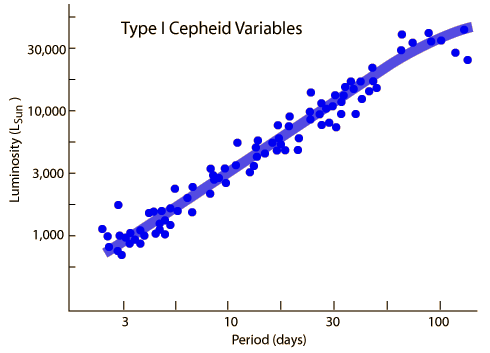Why are standard candles important to astronomers trying to measure the Hubble constant?
1 Answer
When Edwin Hubble first proposed his idea of universal expansion, it was based on the observation that the farther a galaxy was from the Earth, the faster it was moving away from us. When Hubble plotted the distances,

In other words the velocity at which galaxies are receding from us increases with distance at a constant rate. We can express this mathematically as;
Where
A standard candle is a light source for which we know the absolute magnitude. By comparing the absolute magnitude,
Hubble used Cepheid variable stars for his standard candle. Cepheid variables are stars that change their brightness over regular time intervals. This period of brightening and dimming is directly correlated with the absolute magnitude of the star.

Cepheid variables are also incredibly bright, making them observable in other galaxies.

